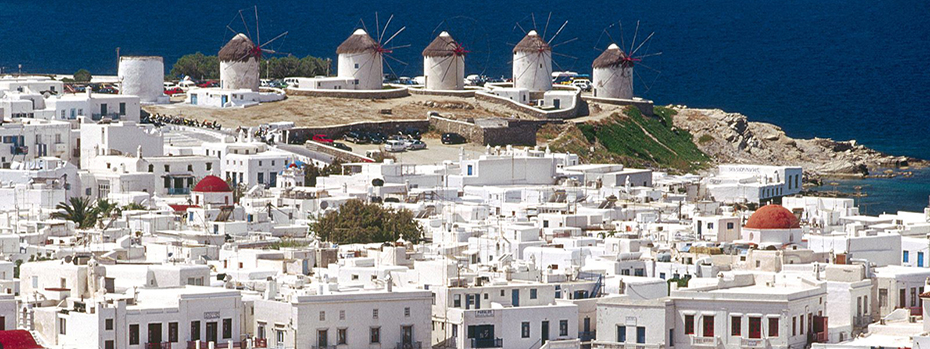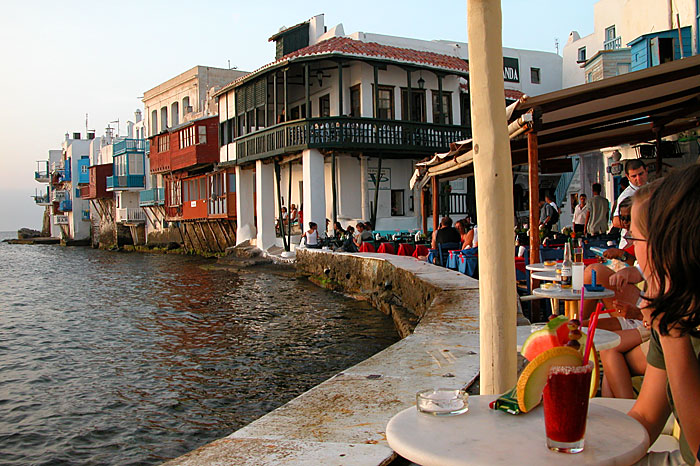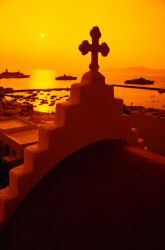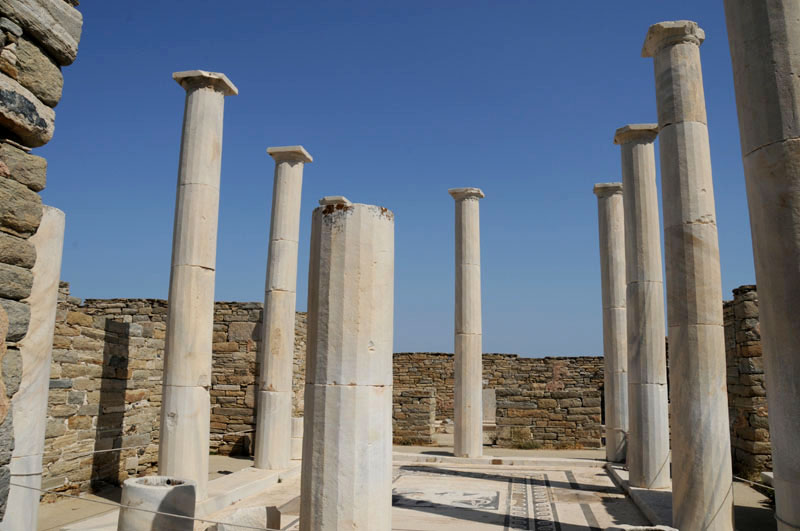Destination: Mykonos
The Island of Mykonos, believed to have been populated since the 10th century BC, takes its name from Mykon, the legendary descendant of Apollo. The island is mentioned in several key Greek myths. It has has been settled by the Phoenicians, ruled by the Persians and Romans, administrated by the Byzantine Empire and conquested by the Ottoman Empire.
Picturesque and charming, Mykonos today is considered by many the most desirable getaway in the Greek Islands for its great beaches, enchanting windmills, nightclubbing, "beautiful people" and glorious weather.
In Mykonos Town, whitewashed organic cubical buildings nest organically together to form a haphazard maze of narrow alleyways and streets. The earthen colors of the surrounding bare hills and the town's gleaming whiteness contrast with an incredibly blue sky and even deeper blue, sparkling sea. Its many well-preserved windmills and hundreds of tiny red-roofed churches add a flavor of traditional culture and custom to the scene. The old fishing port is charming and a favorite of photographers.
Delos
Mykonos is just two miles from the uninhabited island of Delos and its breathtaking archeological sites. Carpenter guests will have the opportunity to visit the island during a private cruise.
According to Greek mythology, Delos was the birthplace of the moon goddess Artemis and the sun god Apollo, the twin offspring of Zeus by Leto. When Leto was discovered to be pregnant, Zeus’ jealous wife Hera had her pursued across the earth by a giant snake, but Poseidon took pity on her and provided Delos as a place for her to give birth in peace.
As the birthplace of Apollo, Delos became a primary Pan-Hellenic religious sanctuary during ancient times, and the ancient Greeks built amazing temples and statues there.
During the Roman Period, Delos became prosperous as an important port. In 88 BC, both Delos and Mykonos were destroyed by enemies of the Romans, after which, Delos sank into obscurity. The excavations that brought to light rich archaeological finds in Delos began in 1873 and continue to be carried out by the French School of Archaeology. The island of Delos became part of the World's Cultural Heritage and is protected by UNESCO.



